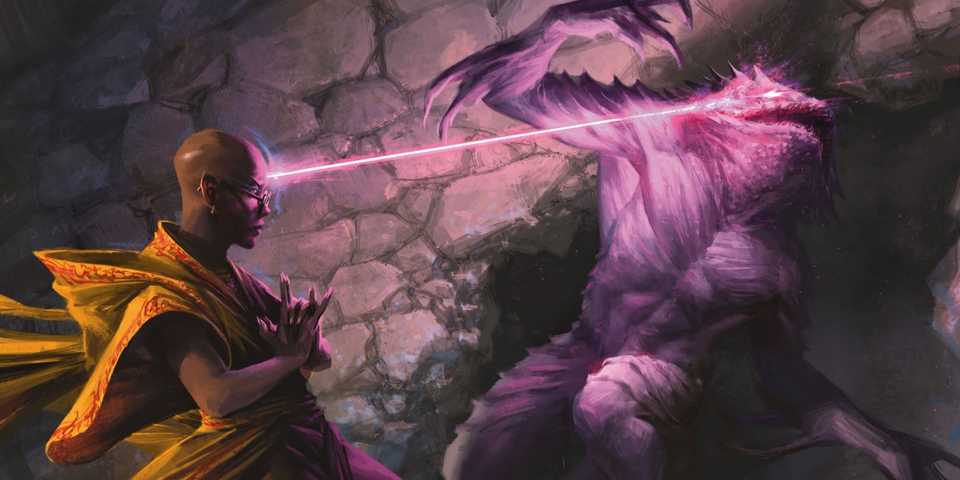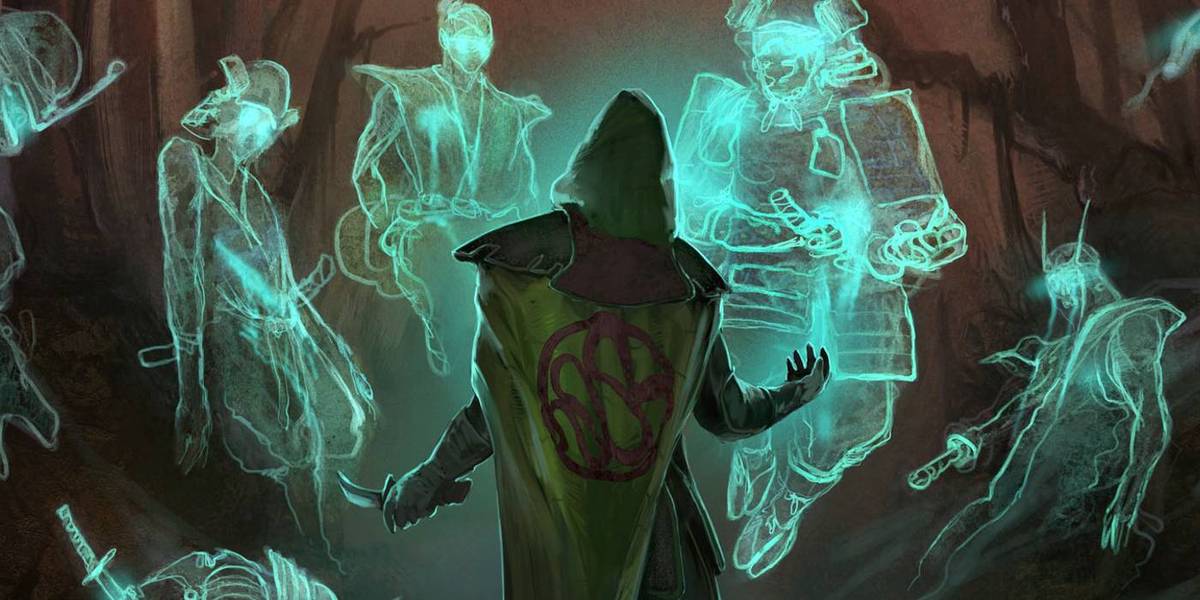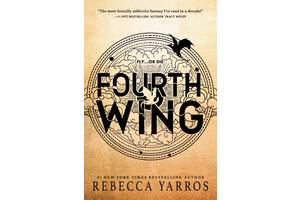D&D: You Probably Aren't Making The Most Of One Great Spell In The 2024 Rules
The simulacrum spell is among the most highly regarded in Dungeons & Dragons, but despite its power, some groups do not get the most out of the spell, while others do not consider its many drawbacks. Simulacrum is a seventh-level Illusion spell, normally available only to characters with 13 or more levels in the wizard class, though bards can also access the spell through the Magical Secrets feature. The requirements are considerable, as the spell uses 1,500 Gold Pieces’ worth of material components and takes 12 hours to cast. Knowing the minutiae of the spell can make it worthwhile.
There were many DnD spells the 2024 PHB fixed, and simulacrum received some much-needed guardrails in the revised version. While the 2014 version limited the caster from creating a second simulacrum, nothing stopped the simulacrum itself from casting the spell, assuming a wizard level of 15 or higher, and making another copy of the original caster. The 2024 revision also prevents a simulacrum from casting the simulacrum spell, preventing endless armies of wizards, but that does not mean the spell is straightforward, by any means. DMs need to understand its weaknesses, while players must learn how to capitalize on it.
Simulacrum Has Weaknesses In Dungeons & Dragons
The Constructs Are Vulnerable To Dispel Magic & Have Low HP
Simulacrum has some weaknesses that players and DMs alike often fail to consider. Some of DnD’s best spells are low level, and the lower-level spells are certainly written with more thoroughness in their description and far less ambiguity than high-level magic. There are weaknesses of simulacrum spelled out in its description, but others require deeper reading and cross-referencing of other rules. Simulacrum’s duration is noted as “until dispelled,” which confirms a simple casting of dispel magic can snuff out the work of 12 hours and expenditure of expensive components. A simulacrum has half the hit point total of the copied creature.
While it is intuitive that wizard players tend to select their own character as the target to copy with simulacrum, it is not always the most effective choice.
Though DnD spellcasters can be fairly tanky in their ability to resist and endure damage, the low HP total of a simulacrum means it could be destroyed by a single area-of-effect spell. 2014’s version noted the simulacra could not “learn or become more powerful,” and the 2024 version clarifies that they “can’t take Short or Long Rests.” Simulacra cannot be healed by conventional magic and repairing them during a long rest is typically a bad idea. If a simulacrum has lost more than 15 HP, it is cheaper to simply make a new one. There are other, more subtle drawbacks.
Some important 2024 DnDDMG magic item changes include the fact that many items require attunement that did not in the 2014 rules. Most of the most powerful magic items require attunement, and since simulacrum are incapable of taking Short Rests, they cannot attune to magic items. A player can equip a simulacrum with mundane or Common-tier gear still, but protecting a simulacrum can require such effort that it negates many of the advantages of having one in the first place. Globe of Invulnerability can protect a simulacrum against dispel magic, along with counterspell, but it remains a fragile ally.
D&D Players Should Think Outside The Box On Targets
Copying Yourself Should Not Always Be The Default Plan






Clearly, DnD requires multiple encounters per day for coherent game balance, and a second caster with most of its spell slots (minus the slot used to create a simulacra) may seem tempting. If a simulacrum is destroyed early in the adventuring day, it may seem like a waste of a high-level spell slot. While it is intuitive that wizard players tend to select their own character as the target to copy with simulacrum, it is not always the most effective choice. A player is likely most familiar with their own characters’ mechanics, but often, other party members are the better choice.
If the party has an optimized DnD ranged rogue or fighter, that can be a better candidate to copy than a wizard, in some cases. Having a second concentration-based spell going can be very helpful, but there can be times when multiple arcane casters become redundant, while a party can never have too much damage output. A well-built Rogue is a master of skills, and cautious play can keep a Rogue simulacrum lasting much longer without using resources, simply by levering Cunning Action to Hide following attacks. Evasion can help negate the most common bane of simulacrum, namely, area-of-effect spells.
Simulacrum is not the brute force Dungeons & Dragons spell some perceive it as, but cunning decision-making lets it shine.
Being Hidden also helps avoid dispel magic, as it requires line-of-sight to the target. A better option could come from the tradition of DnD’s infamous Big Bad Evil Guys, the nomenclature for the primary antagonist in many campaigns. Simulacrum can only copy Beasts and Humanoids, but many campaign BBEGs are Humanoids. If the party’s wizard can access ninth-level spells, wish enables them to cast simulacrum as an Action and foregoes the material component cost. A Wizard could use this as a faster, cheaper way to make a simulacrum of a party member, but copying a BBEG is usually better.
The Power Of D&D's Simulacrum Depends On Tactics
Wish Enables Instant Simulacrum Castings, Opening Up Options
Creating a duplicate of the “final boss,” or one of their primary lieutenants, affords some amazing options for players. It is a great way that players can pleasantly surprise DnD DMs, by thinking outside the box. Copying a villain’s underling might allow the party to infiltrate an evil organization, and they could obtain critical information about the enemy’s goals and plans in an organic way that rewards player agency. The drawbacks to copying a wizard, already a low HP class, with no equipment and half the HP, are considerable. This can be useful, but simulacrum can do so much more.
There is no doubt simulacrum can be an amazing spell. Without proper tactics, it can simply be an expensive, time-consuming liability that spends most of its resources trying to protect itself instead of aiding the party. Having some extra gear on hand for potential targets to duplicate is a wise precaution for those who plan to use the spell regularly. A class that requires less gear, like a monk, could double the Stunning Strike attempts against an enemy when copied. Simulacrum is not the brute force Dungeons & Dragons spell some perceive it as, but cunning decision-making lets it shine.

- Franchise
- Dungeons & Dragons
- Original Release Date
- 1974
- Publisher
- TSR Inc., Wizards of the Coast
- Designer
- E. Gary Gygax, Dave Arneson
- Player Count
- 2-7 Players










Your comment has not been saved